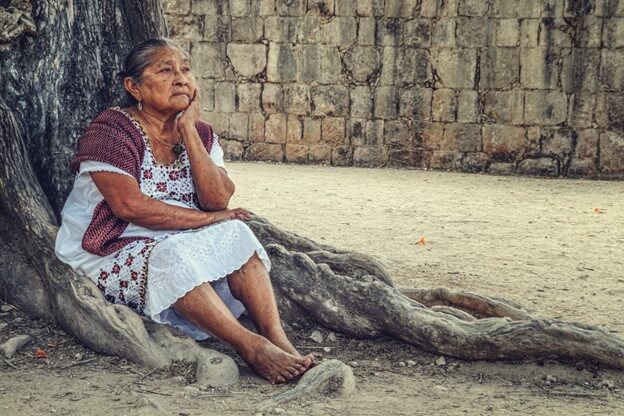When I think of the quintessential summer day, I think back to my childhood. Hot days were spent in the front yard. Nowadays, I feel more comfortable in the privacy of the back patio, but back then I was not self-conscious about playing where everybody could see me. There were no judging eyes—there was only the hot sun, the cool grass, and a sprinkler that promised hours of pleasure.
The heat blended with the humidity to thicken the air into a fragrant sauce and time moved with the languid quality of a slow dance. Even the leaves swaying in the breeze did so with a sense of torpor. But the area surrounding our sprinkler was an oasis amidst the heat. We would dash swiftly through the water with rapid repetition. Each leap over the sprinkler would simultaneously catch the heat basting our skin and the cold water quenching it—the perfect yin/yang of delight. Our feet would race unencumbered through the drenched grass, each step confident and thoughtless. It was the essence of being carefree.
I think of being barefoot and carefree as synonymous. There is something about shedding one’s shoes that is a statement of defiance against the burdens that are imposed upon us as we grow older. As I sit on the back patio at night after work, my feet finally released from their 12-hour confinement inside hot airless shoes, I reflect on how, as we age, our increased burdens not only weigh on our shoulders but, on our feet, as well.
We go from booties to relatively loose, comfortable shoes, like tennis shoes and sandals, to leather school shoes, then to bulky work shoes and high heels, and finally to the heavily structured orthopedic shoes that look and feel like we are wearing boulders.
When we were young and unshod, our feet were active and alive, receiving a continuous stream of sensation from the ground. The earth massaged them and strengthened the muscles, tendons and joints. As adults, our feet are imprisoned in shoes that have an unchanging environment that averages a sweltering 106 degrees.
As we increase the time we spend in shoes, we also increase our distance from the natural world. Shoes not only prevent us from physically connecting with the earth, they symbolize the shift of our disconnecting spiritually with the natural world around us. First come shoes as barriers to the natural world we inhabit, then concrete and asphalt, and finally walls and buildings until we are almost completely divorced from the organic world essential to our lives.
Simon Wikler wrote, “Our feet connect us to the ground, and they are therefore a connection between our earthly and spiritual life. They ground us literally and figuratively.” What happens when we break this connection and replace our own souls touching the earth with leather soles? I don’t want to cast all our modern ills on the shoe, but I would like to believe that if more people went barefoot more of the time, we would have at least a much greener, softer world, and people would be healthier and happier.
Earth Walking
Walking barefoot is like being radiated with the heartbeat of the ground with every step you take. ~A Wondering Dawn
Find a wonderful spot of soft dirt, sand or cool grass and kick off your shoes; walk as long as you can with your feet touching the earth. There are a number of studies that point to the health benefits of simply slipping off your shoes. It has even acquired a therapeutic label—Earthing or Grounding. Research has shown that Earthing improves the cardiovascular system, reduces inflammation, alleviates chronic pain, enhances the immune system, reduces electro-sensitivity, aids sleep, and reduces the effects of stress.
It is well established, though not widely known, that the surface of the Earth possesses a limitless and continuously renewed supply of free or mobile electrons as a consequence of a global atmospheric electron circuit. These electrons are antioxidants that neutralize the free radicals in our bodies. Free radicals contribute to inflammation, disease and chronic pain.
These mobile electrons not only help to prevent disease but are known to accelerate healing. Dr. James Oschman in the Journal of Alternative and Complementary Medicine says, “In the case of an ‘electron deficiency’ (not enough contact with the earth’s surface) the immune system suffers and inflammation can’t be addressed and controlled as quickly as it should be. Once we’re able to neutralize the free radicals with the electrons from the earth, inflammation can begin to subside and this is key to slowing or preventing many chronic diseases.” This energy also helps to thin blood viscosity, one of the major factors of cardiovascular disease.
We are constantly bombarded with a wide spectrum of electromagnetic radiation from computers, cell phones, and television to power lines, domestic wiring, and electrical appliances. This electromagnetic radiation induces voltages in our bodies, disrupting the trillions of subtle electrical communications which are a vital part of the function of our body’s systems. By being grounded to the Earth, we greatly reduce the levels of these induced voltages. Our feet are the umbilical cord to Mother Earth, and as long as that link is there, she provides us with what we need in order to thrive.
No matter what our age, we are but babies to the earth. As we take off our shoes, we return to that innocence. We shed our arrogance, our self-importance, our fervency. Our feet, bare and vulnerable, reclaim that sense of awe we abandoned so long ago.
Earthing Meditation on Impermanence
Because sometimes lying under the trees and walking barefoot on the Earth is the most spiritual thing you can do. ~Anonymous
One of my favorite places to do earth walking is the cemetery. There are practical reasons for this; it is private and peaceful and the grass lush and well-tended, perfect for tender bare feet.
But there are also spiritual reasons. There is something incredibly profound about feeling the air, which is infinite, at the same time as feeling the earth, which is my mortal destination. I do not walk on the graves, but still I feel people from the past as my feet touch the grass alongside them, feel their lost potential, the emptiness in their bodies now which, in mine, houses the entire universe.
There are usually lovely areas to sit and reflect as well, and that is where I meditate, often laying on the ground to both get the full benefit of earthing and a deeper sense of my own mortality. While you do not have to do this meditation in the cemetery, I hope that you at least try it. Fear of death so often translates to fear of living. In Bhutan, one of the secrets to their happiness is to think about death at least five times a day.
Wherever you decide to do this practice, it is best done outdoors. So, start either sitting down with your bare feet touching the earth, or laying down on the ground. Feel its coolness, the support that it provides.
Now notice your breath. It is something that is so ubiquitous that it usually goes unnoticed – yet it is what keeps us alive. One day, in an average moment like this one, it will stop.
Become aware of your body, all the way down to those tiny cells which, at this moment, are dying by the millions or just being born. Think of the tumultuous change and constant flow of your body. There is no still moment.
Take your awareness outside of your body and realize that the same is true of the environment around you. Even in the suspended frame of a second, nothing is still; it is always moving and changing, down to the smallest molecule. Think about how these things are not only changing but also slowly disintegrating. They evidentially will go out of existence. They are not going to be here forever. Everything has an end.
Finally, think about the impermanent nature of things you are attached to: loved ones, possessions, health. Imagine them in ten years; in 20, 50 and, finally, in 100.
Breathe and feel anchored in the earth and this precious moment when life is abundant and beautiful.
***
Torri’s book is available for purchase here.


Recent Comments